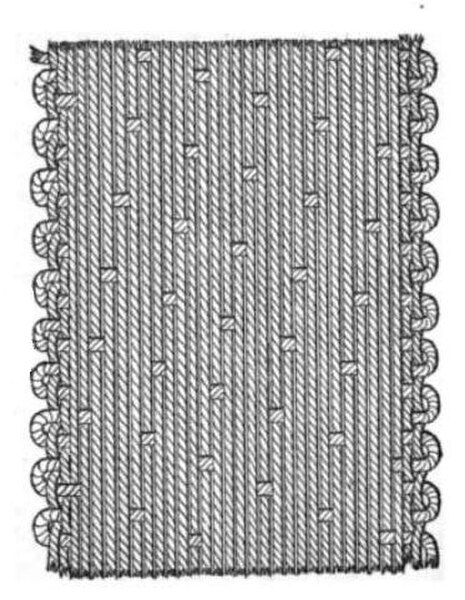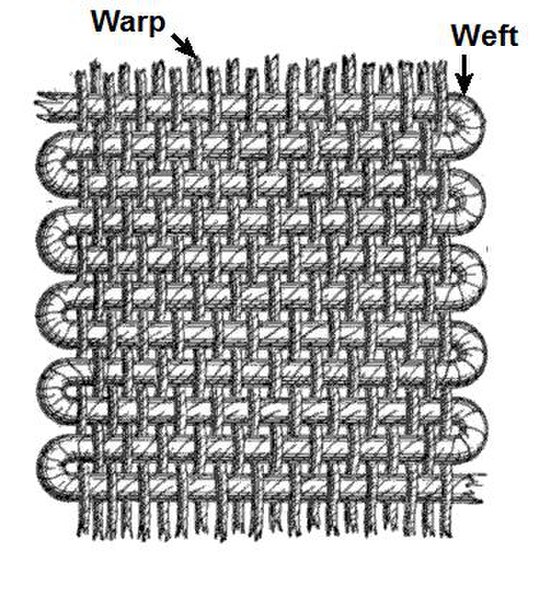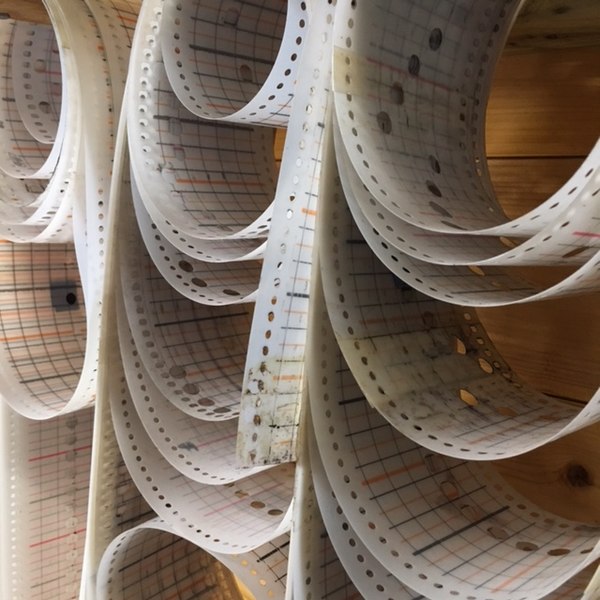A satin weave is a type of fabric weave that produces a characteristically glossy, smooth or lustrous material, typically with a glossy top surface and a dull back; it is not durable, as it tends to snag. It is one of three fundamental types of textile weaves alongside plain weave and twill weave.
Satin weave. The warp yarns are shown running top to bottom, weft running sideways folding at each side. In this case, each warp thread floats over 16 weft threads, then passes under one weft thread, then floats for 16 more threads.
Purple satin fabric
Satin robe. English, c. 1765
Weaving is a method of textile production in which two distinct sets of yarns or threads are interlaced at right angles to form a fabric or cloth. Other methods are knitting, crocheting, felting, and braiding or plaiting. The longitudinal threads are called the warp and the lateral threads are the weft, woof, or filling. The method in which these threads are interwoven affects the characteristics of the cloth.
Cloth is usually woven on a loom, a device that holds the warp threads in place while filling threads are woven through them. A fabric band that meets this definition of cloth can also be made using other methods, including tablet weaving, back strap loom, or other techniques that can be done without looms.
Warp and weft in plain weaving
A satin weave, common for silk, in which each warp thread floats over 16 weft threads
A Bangladesh Ansar officer weaving on duty.
Weaving pattern cards used by Skye Weavers, Isle of Skye, Scotland






